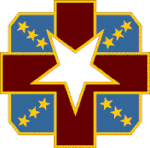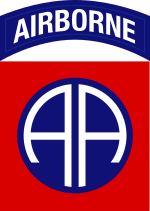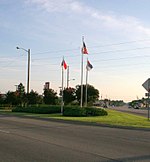John F. Kennedy Special Warfare Center and School
Monuments and memorials to John F. Kennedy in the United StatesSpecial forces units and formations in the United States ArmyUnited States Army schools

The U.S. Army John F. Kennedy Special Warfare Center and School (SWCS) – known informally as "Swick" – primarily trains and educates United States Army personnel for the United States Army Special Operations Command and United States Special Operations Command, which includes Special Forces, Civil Affairs, and Psychological Operations personnel. Its purpose is to recruit, assess, select, train and educate the U.S. Army Civil Affairs, Psychological Operations and Special Forces Soldiers by providing training and education, developing doctrine, integrating force-development capability, and providing career management.
Excerpt from the Wikipedia article John F. Kennedy Special Warfare Center and School (License: CC BY-SA 3.0, Authors, Images).John F. Kennedy Special Warfare Center and School
Normandy Drive,
Geographical coordinates (GPS) Address Nearby Places Show on map
Geographical coordinates (GPS)
| Latitude | Longitude |
|---|---|
| N 35.139167 ° | E -78.999167 ° |
Address
Normandy Drive
Normandy Drive
28307
North Carolina, United States
Open on Google Maps






